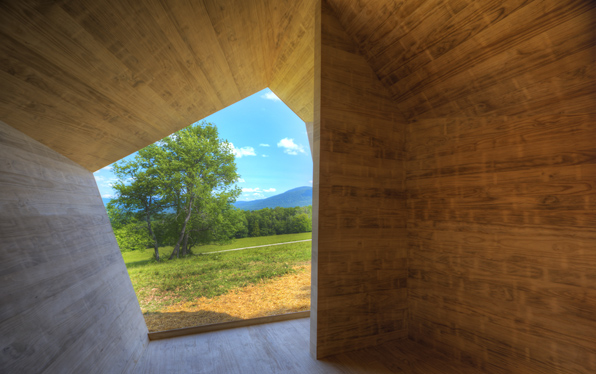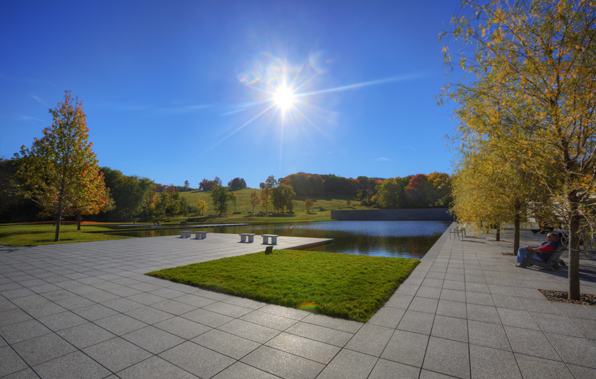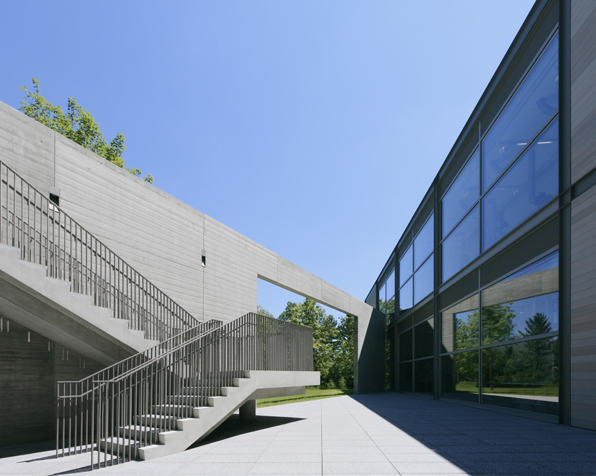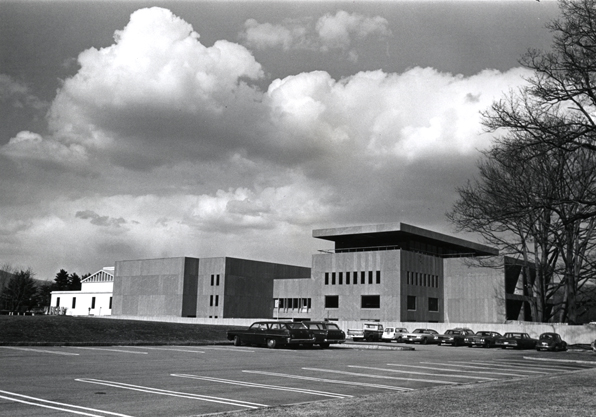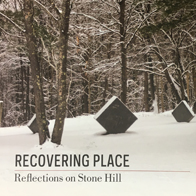
July 4–October 10, 2016
the clark and stone hill
Today, 140 of the roughly 1,600 acres that comprise Stone Hill are home to the Clark Art Institute. The Clark’s campus includes buildings that support its dual mission as an art museum and a research institute, along with a woodland setting of expansive lawns, meadows, and walking trails. The experience of art and nature at the Clark is reinforced by a recent expansion—the campus now faces Stone Hill and celebrates its natural beauty.
In summer 2015, the Clark unveiled Crystal, a structure designed by German artist Thomas Schütte. Overlooking the lower campus from the top of the Clark’s pasture, Crystal serves as a destination and resting point along the Clark’s campus trails, framing a spectacular view of the surrounding hills and forest.
The Clark’s recent campus expansion, largely completed in 2014, included initiatives that strengthen the Clark’s stewardship of its land on Stone Hill. Reed Hilderbrand Landscape Architecture worked with lead architect Tadao Ando to articulate a dramatic new landscape design that achieves new levels of environmental sustainability. The unifying element of the landscape is the three-tiered reflecting pool that is the focal point of the new main campus. The pool is at the heart of an integrated hydrology program that significantly reduces the Clark's consumption of potable water. The landscape was enhanced by new plantings of native species (including some 1,000 trees), the removal of invasive plants, and upgrades to the existing network of walking paths and trails.
The Lunder Center at Stone Hill opened in 2008, completing the first phase of the campus expansion plan. Built to house special exhibitions and food service spaces as well as the Williamstown Art Conservation Center, the Lunder Center is linked to the main campus by walking and driving paths. Its elevated location affords magnificent views of the Taconic Range, the Green Mountains, and the Greylock Range.
In 1973, the red granite building now known as the Manton Research Center opened. Currently under renovation and scheduled to open in late 2016, it houses the Clark’s library and auditorium, the Research and Academic Program, the Graduate Program in the History of Art, an expanded Manton Study Center for Works on Paper, and additional permanent collection galleries.
When Sterling Clark decided to build a museum in Williamstown to house the collection he and his wife Francine had assembled over many years, he purchased two houses on South Street along with a hundred acres of land. The houses were demolished and replaced with the white marble Museum Building that opened in May 1955. The Clarks wanted their collections to be housed in a pastoral setting, creating a synergy between art and nature.
Recovering Place: Reflecting on Stone Hill
By Mark C. Taylor
An illustrated book chronicling the land art and sculptures created by Mark C. Taylor at his home in the Berkshire hills, echoing themes found in the exhibition. Supported in part by Herbert A. Allen, Jr. and the Clark Art Institute and published by Columbia University Press. Call the Museum Store at 413 458 0520 to order.


